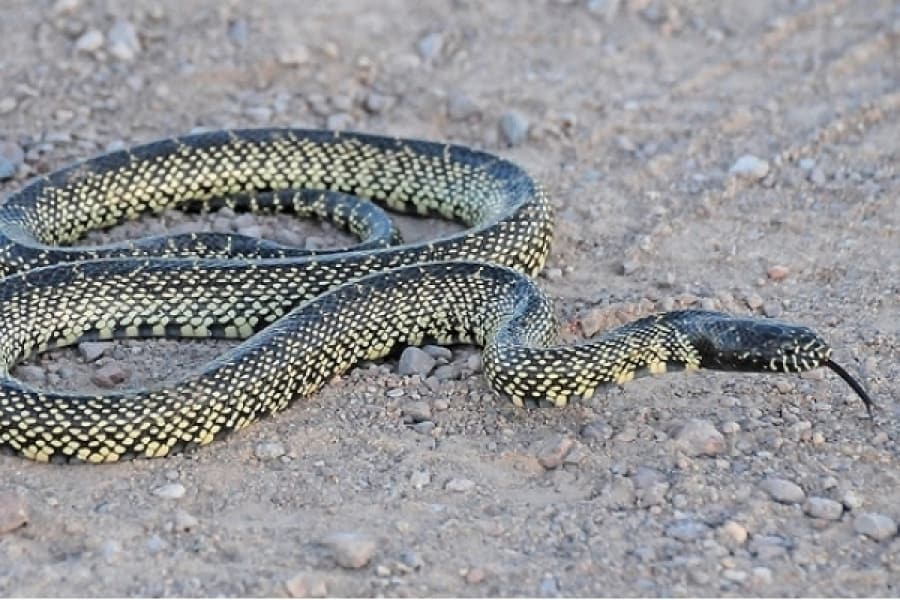
Scientific Name
- The scientific name of Desert Kingsnake is Lampropeltis Getula Splendida.
Description
- It is commonly known as “Common Kingsnake”.
- It was formally known as Sonoran Kingsnake.
- Interbreeding with Speckled Snakes happened in Eastern Texas.
- Yellow and blank in color with a variety of patterns on the smooth and shiny scales.
- They are nocturnal animals, meaning that the snake will become active late evening and night.
- This animal is secretive, and it always hides beneath the logs in the wild.
- They are considered medium-sized snakes, non-venomous, and makes good pet snake.
- They are immune to venomous snakes.
Distribution
- Central and South Western of Texas.
- Desert regions, South Eastern Arizona.
- Sonora of Mexico
Breeding
- Early summer.
- At the age of 3 to 4.
Nesting
- 4 to 20 eggs per clutch between May and August.
- The eggs hatch after 48 to 80 days.
Size
- Hatchling: 7 to 10 inches.
- Adult: 36 to 45 inches.
Life Span
- 10 to 25 years.
Desert Kingsnake Food and Feeding
- The main diets are rodents, mice, rats, eggs, lizards, and other snakes.
- In captivity, suggested 3 to 5 days feeding frequency with small mice or pinkies.
Natural Habitat
- A habitat generalist.
- They are normally found in places like marshes, grassland, chaparral, riparian areas, desert, farmland, forest or woodlands.
More information for Pet Lovers
- The snake is docile and quite calm if regular handling in captivity.
- A great collection for exotic pet lover collection.
